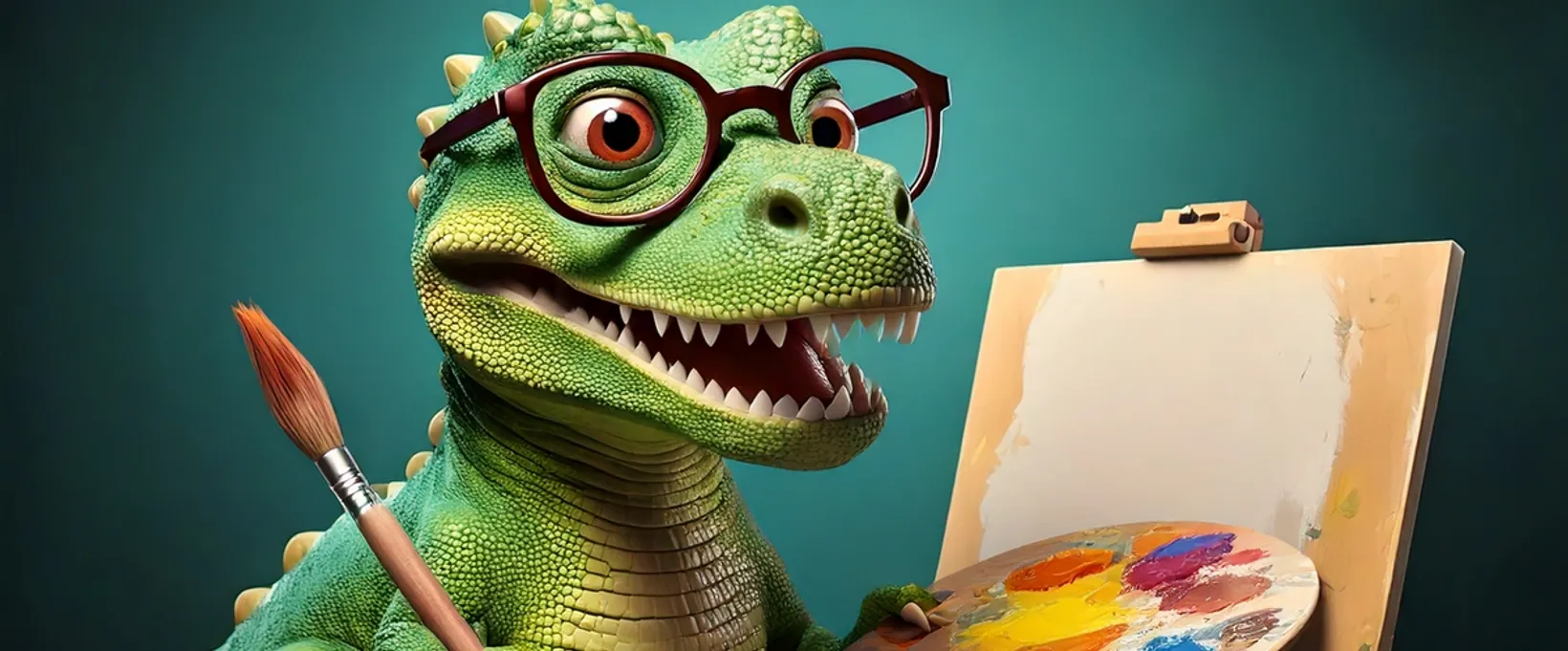At Rapptr Labs, design isn’t just about aesthetics, it’s about purpose, empathy, and crafting experiences that truly resonate with users. In this installment of our behind-the-scenes Q&A series, we’re thrilled to feature our Design Director, Bekah Hanson, whose journey from graphic design roots to leading product design at Rapptr showcases a deep commitment to thoughtful, user-centered innovation.
From early explorations in illustration to navigating the fast-paced world of digital product design, they bring a rich and diverse perspective to every project. Read on to learn how they approach the design process, foster collaboration, and stay ahead in an ever-evolving industry.
Q: Can you tell us a little about your background and what led you to become the Design Director at Rapptr Labs?
A: During my college years, I pursued a degree in graphic design with a specialization in illustration. While I initially envisioned a career in print design and branding, my exposure to web design through internships and freelance projects ignited a passion for digital media. The dynamic challenges of interactive design and scalable solutions continue to inspire me as I adapt to evolving technologies.
My professional journey began at boutique advertising agencies and design firms, where I built a strong foundation in technical expertise, client communication, and user-centered design principles. Over a decade, I cultivated a diverse portfolio spanning multiple disciplines—from consumer packaging and B2C websites to advertising campaigns, brand identity systems, print media, and interactive applications. This broad exposure ultimately crystallized my desire to focus specifically on UI/UX design.
Though my local community offered limited opportunities in product design, the shift toward remote work opened new doors, leading me to discover Rapptr. Since joining Rapptr as a senior product designer in June 2023, I've thrived in our dynamic environment. Agency work provides constant stimulation as we navigate diverse user needs and industries, crafting tailored design solutions for each client. At Rapptr, we cultivate a culture of continuous improvement and professional growth—an ethos that resonates deeply with my commitment to lifelong learning and design excellence.
Q: Can you walk us through your design process when starting a new project?
A: At Rapptr, our design team adapts its approach based on when we join a product's lifecycle. For new MVP projects, we begin with an immersive client workshop to understand the product vision, target audience, and desired brand positioning. Following these initial discussions, we develop the visual foundation through brand identity and logo design. Moodboards serve as our collaborative tool to align on the brand's visual direction. After establishing product requirements, we create interactive wireframes at mid-fidelity, leveraging our extensive component library to streamline the iteration process.
The next phase involves elevating these wireframes to high-fidelity UI designs by applying the established brand styles. Our atomic design methodology breaks down complex interfaces into modular components, ensuring consistency and efficient updates through a centralized component system.
For existing products, we seamlessly integrate their Figma files into our workspace, restructuring and aligning them with Rapptr's design conventions. This systematic approach enables us to maintain quality standards while efficiently implementing new features.
Q: How do you measure the success of your design work once a product is launched?
A: Great designers don't simply hand off screens and walk away. A successful product must be designed to scale and adapt as user needs evolve. Throughout a product's lifecycle, we continuously measure and assess user feedback. The design team works closely with product managers to thoughtfully incorporate this feedback into future iterations.
Q: The design world is always evolving. How do you stay current with emerging design trends, tools, and technologies?
A: Our team stays current through industry newsletters focused on trends, best practices, and technological advancements. We actively explore other designers' work across the web and share inspiring designs internally that could inform future projects.
Q: How do you incorporate feedback from both internal teams and clients into your designs, and how do you handle differing opinions or conflicts during the design process?
A: Incorporating feedback from internal teams and clients requires a structured and empathetic approach. Before forming an opinion, we first actively listen to all feedback, documenting it in Notion or Figma to make no valuable insight is overlooked. Assessing feedback based on project goals, user needs, and feasibility is essential to maintaining focus on delivering the best possible solution. Regularly scheduled design reviews with stakeholders are used to foster a collaborative environment and align expectations.
When disagreements over designs arise, we aim to ground conversations in user data, research, and the overall project objectives. A designer’s expertise is essential in driving the conversation, but ultimately empathy for the user and respect for a product stakeholder’s vision should be prioritized.
Q: User experience is central to everything you do as a designer. How do you ensure your design solutions are user-centered and solve real user problems?
A: Understanding user demographics is a cornerstone of effective product design. While tools like ChatGPT can provide initial insights into unfamiliar user groups, they serve as just one component of our comprehensive research approach.
We leverage prototype testing to gather meaningful user feedback, systematically documenting and analyzing these interactions through Dovetail. This structured approach to user research enables us to continuously refine and enhance the user experience, ensuring our solutions genuinely address user needs.
At Rapptr Labs, we believe great products begin with great people and our design team is at the heart of building digital experiences that matter. Whether you're launching a brand-new MVP or refining an existing product, our user-focused design approach ensures every pixel has purpose.
Curious how our design process can bring your product to life? Let’s talk.
